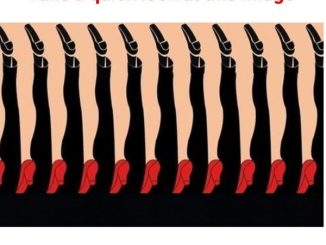A Nostalgic Journey with the Vintage 1967 Kenner’s Spirograph
For many, the Vintage 1967 Kenner’s Spirograph brings back memories of childhood creativity, where hours were spent with colorful pens and plastic gears, creating intricate, mesmerizing designs. This seemingly simple toy turned circles and lines into captivating art, transforming geometry into a hands-on experience for generations. But how did this iconic tool come to be, and why does it still hold such a special place in our memories? Let’s dive into the history, impact, and charm of the Spirograph.

The Rise of a Creative Icon
The story of the Spirograph dates back to the early 1960s when British engineer Denys Fisher created a drawing tool that used plastic gears and rings to produce complex geometric patterns. The original design, though inspired by mathematical curves known as hypotrochoids and epitrochoids, was simple in concept and revolutionary in execution. Fisher’s Spirograph caught the eye of Kenner Products, an American toy company, which then introduced it as “Kenner’s New Spirograph” in 1967.
Once the product hit the shelves, it was an instant success. Children and adults alike were fascinated by the endless design possibilities, and parents appreciated its educational value. Through Spirograph, kids learned about symmetry, patterns, and the basics of geometry without even realizing it. The combination of creativity and learning made it a favorite in households, classrooms, and art studios alike.
A Hands-On Artistic Experience
Imagine the joy of opening a Spirograph kit for the first time, laying out the plastic gears, rings, and pens on the table, and trying out your first design. The simple act of placing a gear inside a ring, inserting a pen, and turning it around the pattern instantly created a magical work of art. Unlike today’s instant digital creations, the process required focus, patience, and curiosity.
For many, this routine became a beloved daily ritual. The Spirograph set offered more than just creative freedom; it provided a sense of accomplishment as each completed pattern revealed a unique masterpiece. The hands-on experience of watching the pen glide around, leaving intricate designs behind, was satisfying in a way that’s hard to replicate in a digital world.

Spirograph’s Impact on Art and Education
Kenner’s Spirograph wasn’t just a toy—it was a bridge between play and education. Parents loved it for keeping kids engaged, while educators saw it as a tool to teach concepts like symmetry, proportion, and even physics. Spirograph’s structured yet open-ended design allowed children to experiment with shapes, teaching them the fundamentals of geometry without lectures or textbooks.
In classrooms, teachers used the Spirograph to demonstrate how shapes could transform with rotation and repetition. It became a versatile teaching aid, helping students visualize mathematical concepts in a hands-on way. The Spirograph was especially influential for young artists and future designers, inspiring careers in fields like architecture, engineering, and graphic design.
Enduring Popularity and Nostalgia
For those who grew up in the late 1960s and ’70s, the Spirograph evokes strong feelings of nostalgia. Memories of rainy afternoons spent crafting designs, experimenting with color combinations, and proudly displaying finished artwork are a testament to its impact. The toy was more than a drawing tool; it was a cherished companion that filled hours with creativity and discovery.

Today, many adults seek out vintage Spirograph sets to reconnect with those cherished memories. The tactile satisfaction of turning a plastic gear to create art feels timeless, offering a break from modern screens and gadgets. Even in a digital age, the Spirograph remains a beloved reminder of simpler times when creativity flourished through the turning of gears and the magic of simple shapes.
Cultural Significance and Collectible Value
Not only was the Spirograph a staple in many households, but it also became a collectible item. Vintage Spirograph sets from 1967, with all their original pieces, are highly valued by collectors. Each piece, from the plastic gears to the colorful pens, carries a sense of history, and collectors view these sets as symbols of a bygone era. The Spirograph represents a time when creativity required patience, effort, and a bit of imagination.
In some European countries, Spirograph sets were adorned with unique, decorative designs, turning them into beautiful artifacts in their own right. For instance, the Peugeot family in France initially started by producing metal goods, including coffee grinders, before moving into cars. They also created high-quality manual coffee grinders that became collectibles. The same appreciation for craftsmanship can be seen in Spirograph sets, where attention to detail and functionality were prioritized.

Why Spirograph Endures in Modern Times
Even with digital advancements, the Spirograph’s appeal endures. While apps and software can create complex designs instantly, they lack the hands-on experience that the Spirograph provides. Some people enjoy incorporating the vintage Spirograph into their daily routines as a way to slow down and engage with art in a more tactile way.
In recent years, there has been a resurgence of interest in analog art tools, as people look for ways to disconnect from screens and experience the joy of making something by hand. For today’s generation, the Spirograph offers a chance to explore creativity in a way that doesn’t involve apps, filters, or screens. It’s a reminder that sometimes, the most satisfying creations are the ones made with simple tools.

Fun Facts About the Vintage Spirograph
- Historical Roots: The Spirograph was inspired by mathematical curves that had been studied for centuries, proving that art and math have always been connected.
- Family Affair: The original 1967 Spirograph kit included gears, rings, and pens, making it an all-in-one creative tool.
- Global Reach: Kenner marketed the Spirograph with the slogan, “The world’s most fascinating new drawing toy!”—and it lived up to the hype.
- Influence Beyond Art: Many Spirograph fans went on to careers in art, architecture, and engineering, crediting the toy with sparking their love for design.

Conclusion: A Lasting Legacy of Creativity
The Vintage 1967 Kenner’s Spirograph was more than just a toy; it was a gateway to creativity, curiosity, and learning for countless children and adults. It inspired a generation to see art and geometry in a new light, making abstract concepts accessible and engaging. The Spirograph’s appeal has endured across generations, reminding us of the joy of creating with our hands, one pattern at a time.
In an era where digital tools dominate, the Spirograph stands as a symbol of the beauty of simplicity. It invites us to slow down, engage with each movement, and appreciate the artistry in each line and curve. Whether you’re reliving childhood memories or discovering it for the first time, the Spirograph remains a timeless classic that celebrates the intersection of art, math, and imagination.


